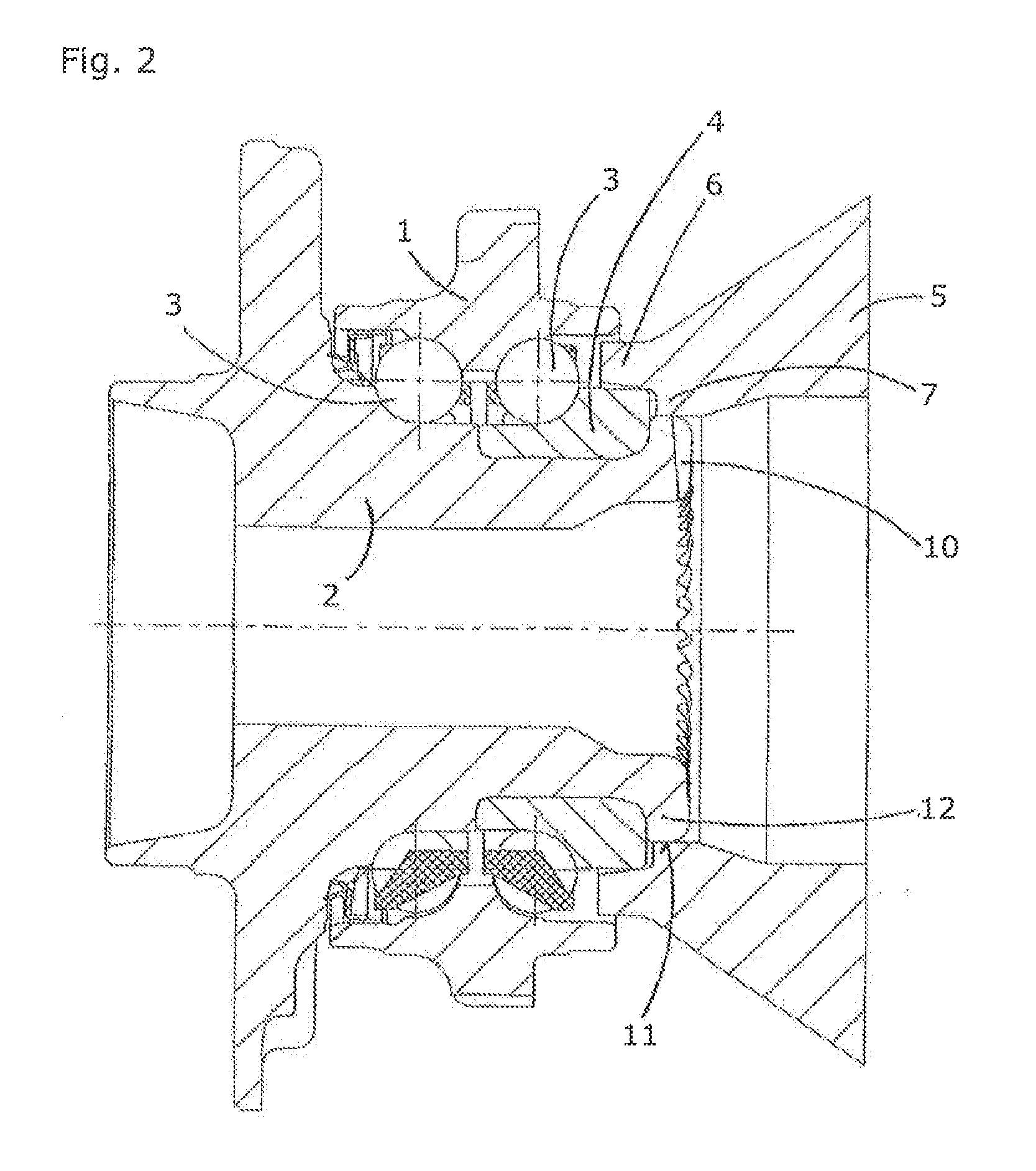Method for forming an end-side toothing arrangement
a technology of end-side teeth and toothing, which is applied in the direction of bearings, couplings, basic electric elements, etc., can solve the problems of not always having a sufficiently precise fit and obvious limit of the rivet head method
- Summary
- Abstract
- Description
- Claims
- Application Information
AI Technical Summary
Benefits of technology
Problems solved by technology
Method used
Image
Examples
Embodiment Construction
[0028]FIG. 1 is a longitudinal section of a third-generation preassembled wheel bearing unit with a die 5 before the rolling riveting process in a first step of the method for forming an end-side toothing arrangement.
[0029]The deformable, cylindrical end piece 9 of the wheel hub 2 is to be cold reshaped in the pending rolling riveting process. For this purpose, the die 5 is arranged on the preassembled wheel bearing unit in such a way that a molding face 8 of the inner extension 7 can be used for radially delimiting and shaping the rolling rivet collar. The molding face 8 is cylindrical, allowing a likewise cylindrical shape to be imparted to the roiling rivet collar. However, the molding face 8 could also be configured conically for the purpose of better shaping.
[0030]The inner extension 7 is designed in one piece with the die 5, so that the method can be kept easy to carry out.
[0031]Advantageously, the damping ring 6 is also formed in one piece with the die 5 and conically embodie...
PUM
| Property | Measurement | Unit |
|---|---|---|
| torque | aaaaa | aaaaa |
| depth | aaaaa | aaaaa |
| surface area | aaaaa | aaaaa |
Abstract
Description
Claims
Application Information
 Login to View More
Login to View More - R&D
- Intellectual Property
- Life Sciences
- Materials
- Tech Scout
- Unparalleled Data Quality
- Higher Quality Content
- 60% Fewer Hallucinations
Browse by: Latest US Patents, China's latest patents, Technical Efficacy Thesaurus, Application Domain, Technology Topic, Popular Technical Reports.
© 2025 PatSnap. All rights reserved.Legal|Privacy policy|Modern Slavery Act Transparency Statement|Sitemap|About US| Contact US: help@patsnap.com



